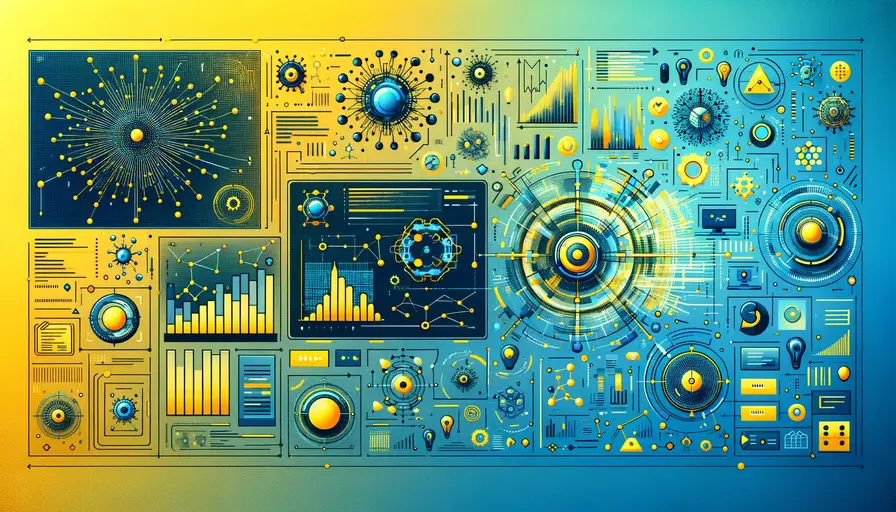
ANN's Role in Machine Learning History: Significance Explored

Artificial Neural Networks (ANNs) have played a transformative role in the history of machine learning, driving significant advancements and enabling remarkable applications across various domains. This article delves into the significance of ANNs, tracing their historical development, exploring their fundamental principles, and examining their impact on modern machine learning. By the end, you will have a comprehensive understanding of how ANNs have shaped the field and continue to drive innovation.
The Historical Development of Artificial Neural Networks
Early Inspirations and Concepts
The concept of artificial neural networks dates back to the 1940s when researchers began exploring the idea of mimicking the human brain's functionality. The earliest model, known as the McCulloch-Pitts neuron, was introduced by Warren McCulloch and Walter Pitts in 1943. This model represented a simple binary threshold logic unit, laying the foundation for subsequent neural network research.
The McCulloch-Pitts neuron demonstrated that neural networks could perform logical operations and be used for computation. Despite its simplicity, this early model sparked interest in the potential of neural networks to replicate cognitive processes. Researchers began to envision the possibility of building machines that could learn and adapt like the human brain.
The development of the perceptron by Frank Rosenblatt in 1958 marked a significant milestone. The perceptron, a single-layer neural network, was capable of learning from data through an algorithm called the perceptron learning rule. Rosenblatt's work demonstrated that neural networks could learn to classify patterns, paving the way for more complex models.
 The Role of Linear Regression in Machine Learning Predictions
The Role of Linear Regression in Machine Learning PredictionsThe AI Winter and Resurgence
Despite the initial excitement, the field of neural networks faced a period of stagnation known as the AI Winter during the 1970s and 1980s. The limitations of early neural network models, particularly their inability to solve non-linear problems, led to skepticism and reduced funding for research. Critics highlighted the weaknesses of single-layer networks and the lack of computational power to train larger models.
The resurgence of neural networks began in the mid-1980s with the introduction of the backpropagation algorithm. Developed by Geoffrey Hinton, David Rumelhart, and Ronald Williams, backpropagation allowed multi-layer neural networks to be trained effectively. This breakthrough addressed the limitations of single-layer networks and enabled the training of deep networks.
The renewed interest in neural networks was fueled by advancements in computational power and the availability of large datasets. Researchers began exploring various architectures and techniques, leading to significant improvements in model performance. The field of neural networks transitioned from theoretical exploration to practical applications, setting the stage for the modern era of deep learning.
The Rise of Deep Learning
The term "deep learning" emerged in the 2000s, referring to neural networks with multiple hidden layers capable of learning hierarchical representations. The resurgence of neural networks, driven by deep learning, revolutionized the field of machine learning and artificial intelligence. Key milestones included the development of Convolutional Neural Networks (CNNs) for image recognition and Recurrent Neural Networks (RNNs) for sequence modeling.
 Unraveling Machine Learning: Insights from Scholars
Unraveling Machine Learning: Insights from ScholarsDeep learning's impact became evident in 2012 when a CNN, known as AlexNet, won the ImageNet Large Scale Visual Recognition Challenge by a significant margin. This achievement highlighted the potential of deep learning for solving complex problems and sparked widespread interest in the technology. Researchers and practitioners began applying deep learning to various domains, leading to breakthroughs in natural language processing, computer vision, and more.
The success of deep learning can be attributed to several factors, including advancements in hardware, such as Graphics Processing Units (GPUs), and the availability of large annotated datasets. These developments enabled the training of deep networks with millions of parameters, achieving unprecedented levels of accuracy and performance. Deep learning has since become a cornerstone of modern machine learning, driving innovation and enabling new applications.
Fundamental Principles of Artificial Neural Networks
Neurons and Activation Functions
The fundamental building block of an artificial neural network is the neuron, also known as a node or unit. Neurons receive inputs, apply a weighted sum, and pass the result through an activation function to produce an output. The activation function introduces non-linearity, allowing the network to learn complex patterns.
Common activation functions include the sigmoid, hyperbolic tangent (tanh), and rectified linear unit (ReLU). The sigmoid function maps inputs to a range between 0 and 1, making it suitable for binary classification. The tanh function maps inputs to a range between -1 and 1, providing a symmetric output. The ReLU function, defined as the maximum of zero and the input, has become the default choice for hidden layers due to its simplicity and effectiveness in mitigating the vanishing gradient problem.
 Questions to Ask When Initiating a Machine Learning Project
Questions to Ask When Initiating a Machine Learning ProjectHere’s an example of implementing a simple neuron with a ReLU activation function using NumPy:
import numpy as np
# Input and weights
inputs = np.array([1.0, 2.0, 3.0])
weights = np.array([0.2, 0.8, -0.5])
bias = 2.0
# Weighted sum
weighted_sum = np.dot(inputs, weights) + bias
# ReLU activation function
output = np.maximum(0, weighted_sum)
print(output)Network Architectures and Layers
Artificial neural networks are composed of multiple layers of neurons, including input, hidden, and output layers. The input layer receives the raw data, the hidden layers perform feature extraction and transformation, and the output layer produces the final prediction. The architecture of a neural network, including the number of layers and neurons, significantly influences its performance.
Feedforward neural networks, also known as multi-layer perceptrons (MLPs), are the simplest type of neural network where information flows in one direction from input to output. Convolutional Neural Networks (CNNs) are specialized for processing grid-like data, such as images, and utilize convolutional layers to detect spatial features. Recurrent Neural Networks (RNNs) are designed for sequential data and use recurrent connections to capture temporal dependencies.
The choice of network architecture depends on the specific task and data characteristics. For instance, CNNs are well-suited for image recognition, while RNNs excel in natural language processing. Experimenting with different architectures and hyperparameters is essential for optimizing model performance.
 Master Machine Learning with R
Master Machine Learning with RTraining and Optimization
Training a neural network involves optimizing its weights to minimize a loss function, which measures the discrepancy between the predicted and actual outputs. The backpropagation algorithm, combined with gradient descent optimization, is the standard method for training neural networks. During backpropagation, gradients of the loss function with respect to the weights are computed and used to update the weights iteratively.
Various optimization techniques have been developed to improve the efficiency and convergence of training. Stochastic Gradient Descent (SGD) updates the weights using a small batch of data, providing faster convergence and reduced memory usage. Advanced optimizers, such as Adam and RMSprop, adapt the learning rate for each parameter, further enhancing training performance.
Regularization techniques, such as dropout and weight decay, help prevent overfitting by adding noise to the training process or penalizing large weights. These techniques improve the generalization of the model, ensuring it performs well on unseen data.
Here’s an example of training a simple neural network using the Keras library in TensorFlow:
 Stay Informed on Latest Machine Learning Dataset News
Stay Informed on Latest Machine Learning Dataset Newsimport tensorflow as tf
from tensorflow.keras.models import Sequential
from tensorflow.keras.layers import Dense
# Creating a simple neural network
model = Sequential([
Dense(64, activation='relu', input_shape=(3,)),
Dense(64, activation='relu'),
Dense(1, activation='sigmoid')
])
# Compiling the model
model.compile(optimizer='adam', loss='binary_crossentropy', metrics=['accuracy'])
# Generating sample data
X_train = np.random.rand(100, 3)
y_train = np.random.randint(2, size=100)
# Training the model
model.fit(X_train, y_train, epochs=10, batch_size=10)The Impact of Artificial Neural Networks on Modern Machine Learning
Advancements in Computer Vision
Artificial neural networks, particularly Convolutional Neural Networks (CNNs), have revolutionized the field of computer vision. CNNs excel in tasks such as image classification, object detection, and segmentation by leveraging convolutional layers to detect spatial hierarchies and patterns in images. This capability has led to significant improvements in accuracy and efficiency for various computer vision applications.
Landmark achievements include the development of AlexNet, which demonstrated the potential of deep learning for image classification by winning the ImageNet competition in 2012. Subsequent architectures, such as VGGNet, GoogLeNet, and ResNet, introduced innovations like deeper networks, inception modules, and residual connections, further advancing the state of the art.
The impact of CNNs extends beyond academia to real-world applications, including autonomous driving, facial recognition, medical imaging, and augmented reality. These advancements have transformed industries, enabling new capabilities and improving existing processes.
Breakthroughs in Natural Language Processing
Recurrent Neural Networks (RNNs) and their variants, such as Long Short-Term Memory (LSTM) and Gated Recurrent Unit (GRU), have significantly advanced natural language processing (NLP). RNNs are designed to handle sequential data, making them suitable for tasks like language modeling, machine translation, and sentiment analysis.
 Why Python is the Preferred Language for Machine Learning
Why Python is the Preferred Language for Machine LearningThe introduction of attention mechanisms and Transformer models, such as BERT and GPT, marked a major breakthrough in NLP. These models leverage self-attention to capture long-range dependencies and context, achieving state-of-the-art performance in various NLP benchmarks. Transformer models have enabled advancements in text generation, question answering, and language understanding.
The impact of these advancements is evident in applications like chatbots, virtual assistants, and machine translation services. Companies like Google, OpenAI, and Microsoft have leveraged these technologies to develop sophisticated NLP systems that enhance user experiences and streamline communication.
Enabling New Frontiers in AI
The evolution of artificial neural networks has opened new frontiers in artificial intelligence, enabling capabilities that were previously unimaginable. Deep reinforcement learning, which combines neural networks with reinforcement learning, has achieved remarkable success in areas like game playing, robotics, and autonomous systems.
Notable achievements include DeepMind's AlphaGo, which defeated human champions in the game of Go, and OpenAI's Dota 2 bots, which competed against professional players. These successes demonstrate the potential of neural networks to solve complex, high-dimensional problems that require strategic planning and decision-making.
The versatility and scalability of neural networks have also enabled advancements in areas such as generative modeling, where models like Generative Adversarial Networks (GANs) and Variational Autoencoders (VAEs) generate realistic images, music, and text. These innovations are driving progress in creative industries, healthcare, and beyond.
Challenges and Future Directions in Neural Network Research
As neural networks become increasingly integrated into various aspects of society, addressing the ethical and social implications of their use is paramount. Concerns about bias, fairness, transparency, and accountability have emerged, highlighting the need for responsible AI practices. Ensuring that neural networks are designed and deployed ethically requires collaboration between researchers, policymakers, and stakeholders.
Bias in neural networks can arise from biased training data, leading to discriminatory outcomes in applications like hiring, lending, and law enforcement. Mitigating bias involves developing techniques for fair representation, auditing models for biases, and ensuring diverse and representative datasets.
Transparency and interpretability are also critical for building trust in AI systems. Researchers are exploring methods for explaining neural network decisions, such as attention visualization and model-agnostic interpretability techniques. These efforts aim to provide insights into how neural networks make predictions, enabling users to understand and trust their decisions.
Enhancing Model Efficiency and Scalability
The complexity and computational requirements of deep neural networks pose challenges for efficiency and scalability. Training large models with millions or billions of parameters requires significant computational resources and energy consumption. Researchers are exploring techniques to improve the efficiency of neural networks, including model compression, quantization, and hardware accelerators.
Model compression techniques, such as pruning and knowledge distillation, reduce the size and complexity of neural networks without compromising performance. Quantization involves reducing the precision of weights and activations, enabling more efficient computation on specialized hardware.
Hardware accelerators, such as GPUs, TPUs, and custom AI chips, are designed to optimize the performance of neural networks. These accelerators enable faster training and inference, making it feasible to deploy deep learning models in resource-constrained environments, such as mobile devices and edge computing.
Exploring Novel Architectures and Learning Paradigms
The field of neural network research is continually evolving, with ongoing exploration of novel architectures and learning paradigms. Researchers are investigating new network architectures that can improve performance, robustness, and generalization. These include graph neural networks, capsule networks, and spiking neural networks.
Graph neural networks (GNNs) extend the capabilities of traditional neural networks to graph-structured data, enabling applications in social network analysis, molecular modeling, and recommendation systems. Capsule networks, introduced by Geoffrey Hinton, aim to address the limitations of CNNs by capturing hierarchical relationships and improving robustness to transformations.
Spiking neural networks (SNNs) are inspired by the brain's neural circuits and offer the potential for energy-efficient computation. SNNs use discrete spikes to transmit information, enabling asynchronous and event-driven processing. This approach holds promise for neuromorphic computing and brain-inspired AI.
In addition to novel architectures, researchers are exploring new learning paradigms, such as self-supervised learning, meta-learning, and continual learning. These paradigms aim to improve the adaptability and efficiency of neural networks, enabling them to learn from limited data, transfer knowledge across tasks, and adapt to changing environments.
Artificial Neural Networks (ANNs) have played a pivotal role in the history of machine learning, driving significant advancements and enabling groundbreaking applications. From early inspirations and concepts to the rise of deep learning, ANNs have transformed the field, leading to remarkable achievements in computer vision, natural language processing, and beyond. Despite challenges, the ongoing evolution of neural networks holds promise for new frontiers in AI, including ethical considerations, efficiency improvements, and novel architectures. By leveraging the power of ANNs, researchers and practitioners continue to push the boundaries of what is possible, shaping the future of artificial intelligence.
If you want to read more articles similar to ANN's Role in Machine Learning History: Significance Explored, you can visit the Education category.






You Must Read